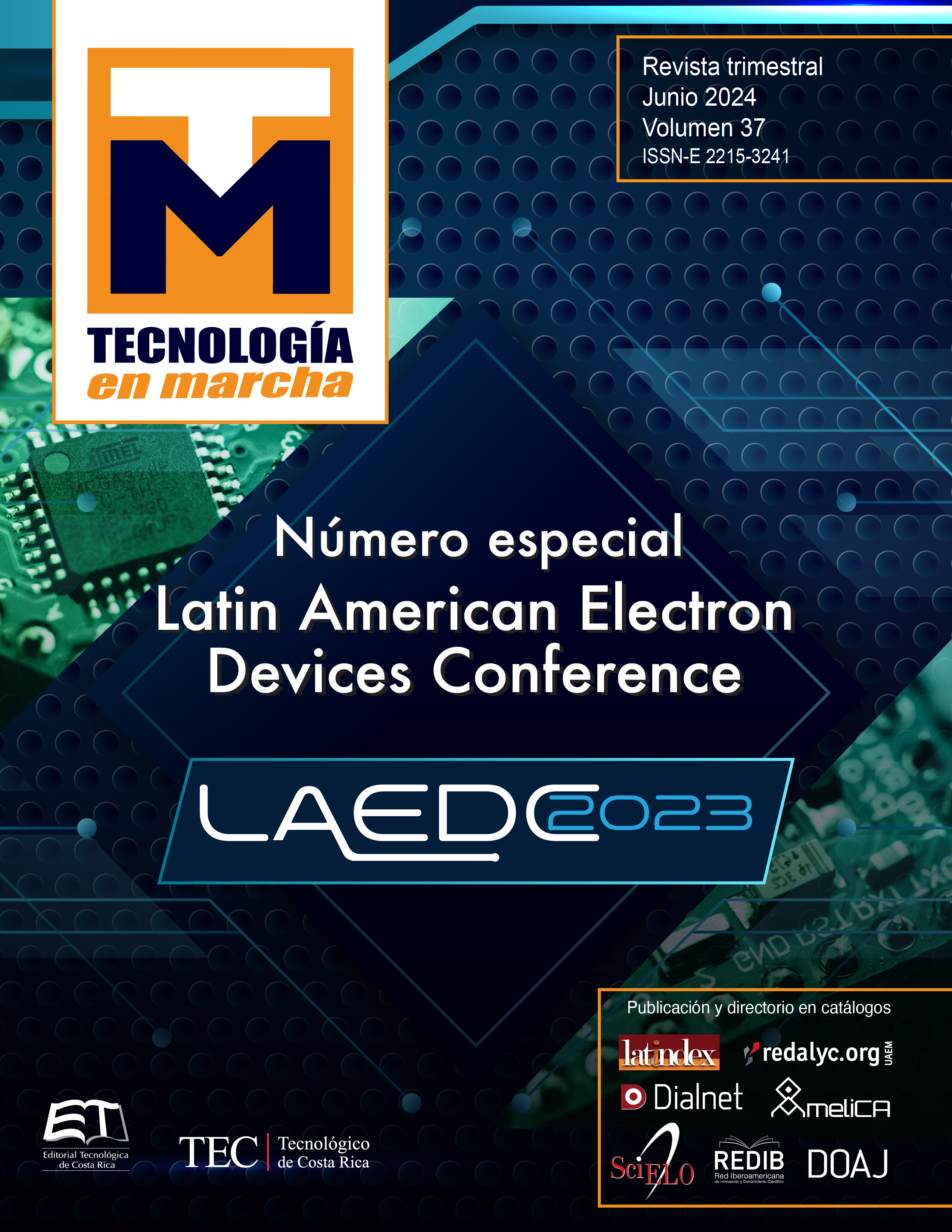Propuesta de biblioteca de aceleradores de código abierto para inferencia de redes Transformer en dispositivos perimetrales
Contenido principal del artículo
Resumen
Las redes de Transformers han sido un gran hito en el campo del procesamiento del lenguaje natural y han impulsado tecnologías como ChatGPT, que indudablemente están cambiando la vida de las personas. Este artículo discute las características y la complejidad computacional de las redes de Transformers, así como el potencial para mejorar su rendimiento en entornos con pocos recursos mediante el uso de aceleradores de hardware. Esta investigación tiene el potencial de mejorar significativamente el rendimiento de los Transformers en dispositivos de edge y de gama baja. Además, se exploran la Inteligencia Artificial en el edge, la Aceleración de Hardware y los algoritmos de Tiny Machine Learning. La metodología propuesta incluye una capa de software y hardware, con una imagen mínima basada en Linux construida sobre un nivel de transferencia de registro (RTL) sintetizada. La propuesta también incluye una biblioteca de aceleradores de hardware que se puede personalizar para seleccionar los aceleradores deseados según los recursos del dispositivo y las operaciones a acelerar.
Detalles del artículo

Esta obra está bajo una licencia internacional Creative Commons Atribución-NoComercial-SinDerivadas 4.0.
Los autores conservan los derechos de autor y ceden a la revista el derecho de la primera publicación y pueda editarlo, reproducirlo, distribuirlo, exhibirlo y comunicarlo en el país y en el extranjero mediante medios impresos y electrónicos. Asimismo, asumen el compromiso sobre cualquier litigio o reclamación relacionada con derechos de propiedad intelectual, exonerando de responsabilidad a la Editorial Tecnológica de Costa Rica. Además, se establece que los autores pueden realizar otros acuerdos contractuales independientes y adicionales para la distribución no exclusiva de la versión del artículo publicado en esta revista (p. ej., incluirlo en un repositorio institucional o publicarlo en un libro) siempre que indiquen claramente que el trabajo se publicó por primera vez en esta revista.
Citas
A. Vaswani et al. “Attention is All You Need”. 31st International Conference on Neural Information Processing
Systems, Long Beach, California, 2017, pp. 6000–6010.
OpenAI, “GPT-4 Technical Report,” [Online], Mar 15 2023. Available: https://doi.org/10.48550/arXiv.2303.08774
U. Farooq. (2021). What Is Hardware Acceleration and When Should You Use It? [Online]. Available: https://
www.makeuseof.com/what-is-hardware-acceleration/
A. N. Mazumder et al. (2021, Dec). “A Survey on the Optimization of Neural Network Accelerators for Micro-AI
On-Device Inference”. IEEE Journal on Emerging and Selected Topics in Circuits and Systems [Online]. Vol.
, issue 4, pp. 532-547. Available: https://doi.org/10.1109/JETCAS.2021.3129415
J. Lee and H. J. Yoo. (2021, Oct). “An Overview of Energy-Efficient Hardware Accelerators for On-Device
Deep-Neural-Network Training”. IEEE Open Journal of the Solid-State Circuits Society [Online]. Vol. 1, pp. 115-
Available: https://doi.org/10.1109/OJSSCS.2021.3119554
H. Yang and X. Lingao. (2023). “Structured Pruning for Deep Convolutional Neural Networks: A survey”
[Online]. Available: http://doi.org/10.48550/arXiv.2303.00566
Y. Hancheng, B. Zhang, T. Chen, and J. Fan. (2023, March). “Performance-aware Approximation of Global
Channel Pruning for Multitask CNNs” [Online]. Available: https://doi.org/10.1109/TPAMI.2023.3260903
H. Park and S. Kim, “Chapter Three – Hardware accelerator systems for artificial intelligence and machine
learning,” in Hardware Accelerator Systems for Artificial Intelligence and Machine Learning, S. Kim and G. C.
Deka, Eds. Amsterdam: Elsevier, 2021, pp 51-95.
S. Disabato and M. Roveri. (2022, Dec). “Tiny Machine Learning for Concept Drift”. IEEE Transactions on
Neural Networks and Learning Systems [Online]. Available: https://doi.org/10.1109/TNNLS.2022.3229897
S. Lu et al, “Hardware accelerator for multi-head attention and position-wise feed-forward in the transformer,”
in 2020 IEEE 33rd International System-on-Chip Conference (SOCC), 2020, .
C. Fang et al, “An efficient hardware accelerator for sparse transformer neural networks,” in 2022 IEEE
International Symposium on Circuits and Systems (ISCAS), 2022, .
H. Wang and T. Chang, “Row-wise accelerator for vision transformer,” in 2022 IEEE 4th International
Conference on Artificial Intelligence Circuits and Systems (AICAS), 2022, .
P. Qi et al, “Accelerating framework of transformer by hardware design and model compression co-optimization,” in 2021 IEEE/ACM International Conference on Computer Aided Design (ICCAD), 2021, .
L. Bai, Y. Zhao and X. Huang, “A CNN accelerator on FPGA using depthwise separable convolution,” IEEE
Transactions on Circuits and Systems II: Express Briefs, vol. 65, (10), pp. 1415-1419, 2018.
A. Kyriakos et al, “High performance accelerator for cnn applications,” in 2019 29th International Symposium
on Power and Timing Modeling, Optimization and Simulation (PATMOS), 2019, .
Z. Azad, R. Sen, K. Park, and A. Joshi, “Hardware Acceleration for DBMS Machine Learning Scoring: Is It Worth
the Overheads?,” presented at the - 2021 IEEE International Symposium on Performance Analysis of Systems
and Software (ISPASS), 2021, pp. 243–253, doi: 10.1109/ISPASS51385.2021.00047.

